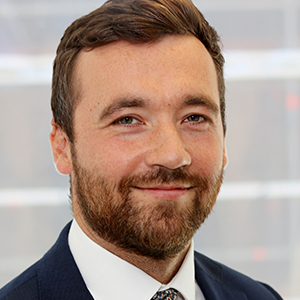For any commercial aviation death or injury claim, there is usually a fixed two-year period to file a lawsuit against the airline or operator. This two-year period is rooted in international law and international aviation treaties (Warsaw, Hague & Montreal). Courts around the globe have uniformly interpreted that two-year period strictly. However, whilst considered a fundamental rule for any aviation lawyer, it can often be overlooked, and getting it wrong can cause significant issues for the case.
In this article, Aviation partners James Healy-Pratt and Owen Hanna analyse how a recent case in Australia highlighted an example of the importance of seeking expert advice for any aviation claim.
Sydney Seaplanes PTY Ltd v Page
The father of an eleven-year-old girl killed when a seaplane crashed during a sightseeing trip in Sydney has been barred from suing Sydney Seaplanes and ordered to pay the company’s legal costs after a successful appeal by the aircraft operator (and its insurers).
All six people on board the seaplane during a New Year’s Eve joy ride in 2017 – pilot Gareth Morgan, British tycoon Richard Cousins, his sons William and Edward, his fiancée Emma Bowden and her daughter Heather Bowden-Page – were killed when the aircraft nosedived into the Hawkesbury River at Jerusalem Bay.
In October last year the New South Wales Supreme Court allowed Alexander Page, a British national and father of Heather Bowden-Page, to proceed with a lawsuit against Sydney Seaplanes that his lawyers had originally, erroneously, filed in the Federal Court in December 2019.
The Court rulings
As the seaplane’s fatal flight from Rose Bay to Cottage Point took place within New South Wales, the Federal Court had dismissed the claim, finding it had no jurisdiction to hear it. Mr Page then applied to have it heard in the New South Wales Supreme Court, seeking to keep the original claim date, which was within two years of the crash.
The New South Wales Court of Appeal dismissed the Supreme Court’s earlier ruling in Mr Page’s favour, barring him from continuing the lawsuit, and ordered him to pay Sydney Seaplanes’ legal fees and costs. In upholding the appeal, the Court said it was “no small thing” that a provision exists allowing certain matters to be backdated, essentially becoming “a retrospective fictional proceeding in the Supreme Court by way of statute”. This case, they ruled, did not fall under those covered by the statute.
The ruling noted that “it is difficult to justify the operation of such an extreme measure as a safety net for litigants who misguidedly take the serious step of commencing proceedings in the Federal Court without first considering the issue of jurisdiction”.
Two-year limitation period
The direct implication of this ruling is that Mr Page’s civil claim against Sydney Seaplanes can no longer be pursued and so no damages can be recovered from them or their insurers. However, Mr Page may have other avenues open to him, such as a separate action against his lawyers for professional negligence, since the initial decision to file in the incorrect court likely came from them and not him.
Although strictly speaking this case applies to the Australian courts only, it is bound to have some impact internationally as yet another reminder for practitioners that the two-year period to file a lawsuit against an airline is strict, and that no leeway should be expected for any errors. It is also a reminder that aviation claims require aviation lawyers, and that expert advice should always be sought.
If you have any questions on the issues raised in this article or would like to discuss a claim, please contact James Healy-Pratt or Owen Hanna.
To receive our aviation law newsletter, or the Keystone monthly round up, please click here.
This article is for general information purposes only and does not constitute legal or professional advice. It should not be used as a substitute for legal advice relating to your particular circumstances. Please note that the law may have changed since the date of this article.


